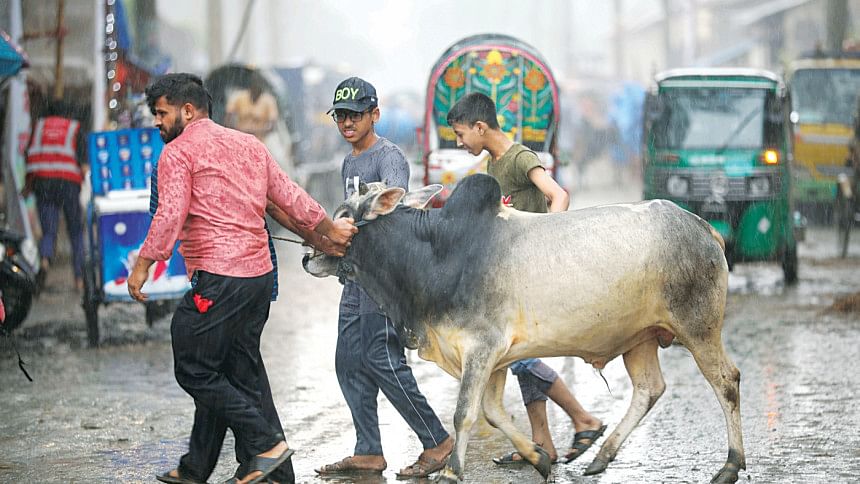Celebrating Eid the Chatgaiya way

From the infectious enthusiasm in the air to the meticulously prepared delicacies and vibrant gatherings, the Chatgaiya way of celebrating Eid-ul-Azha showcases a fusion of prosperity, religious devotion, and cultural heritage.
With its historical reputation as a prosperous city and a hub of religious passion, Chattogram stands apart from other regions during this joyous occasion.
Prof Dr Monzur-Ul-Amin Chowdhury, senate member of Chittagong University, says while many traditional practices continue to thrive, some have gradually faded away with the passage of time. However, the spirit of the Chatgaiya community remains intact, as they proudly embrace their unique identity and rejoice in their distinctive way of observing Eid-ul-Azha.

Starts with the sacrificial rituals
The people of Chattogram prefer to offer their sacrifice on the very first day of Eid-ul-Azha, however, in a few cases that may be an exception. Traditionally, they prefer a single animal's sacrifice, be it -- a cow, buffalo, or camel under the name of seven people. In the case of goats, sheep, and ewes, there is a religious provision for sacrificing under a single name.
Sending sacrificial animals to the daughter's in-law's house is also an age-old custom in Chattogram. This practice still goes on in the region per the person's affordability.

THEN COMES THE FOOD
If there's one word synonymous with extravagance, it would undoubtedly be Chattogram's cuisine during festivals. Households prepare special dishes using the meat of sacrificial animals, elevating the culinary experience to new heights.
Hosting guests with freshly cooked meat and hand-made bread is a must-have of Chatgaiya culture. It is also a traditional custom in Chattogram to distribute these hand-made flatbreads and cooked mezbani meat or kala bhuna to the homes of relatives.
Meanwhile, the tradition of city dwellers returning to their village homes to celebrate Eid with extended families is gradually fading as the concept of joint families transforms into smaller nuclear units. Nevertheless, many families in the port city continue to uphold this practice, taking advantage of the closure of educational institutions during the festive period and travelling to their village homes four to five days prior to Eid.
In villages, the afternoon on Eid day is marked by the serving of different types of pitha (traditional rice cakes) among family members and visiting guests, a custom absent in city areas. The meat from the sacrificial animals is divided into three parts in villages, with one part distributed to the poor, one sent to relatives, and one retained for personal consumption. This distribution process commences in the afternoon and continues into the evening.
Evening meals in villages consist of meat dishes paired with traditional ruti (flatbread), while in cities, meat dishes are served with parata or bakarkhani (types of flaky bread).
In villages, the male members of the family gather in the yard, engaging in lively conversations and adda (informal discussions) from evening till night, while women focus on preparing delectable meat-based dishes in the kitchen. Meanwhile, children enjoy the evening with their cousins and friends.
In contrast, city dwellers typically remain in their houses or apartments during the evening
Thus, the conclusion of Eid day unfolds in its own distinctive manner, with varying traditions and activities, encapsulating the diverse celebrations of village and city life.


 For all latest news, follow The Daily Star's Google News channel.
For all latest news, follow The Daily Star's Google News channel. 



Comments